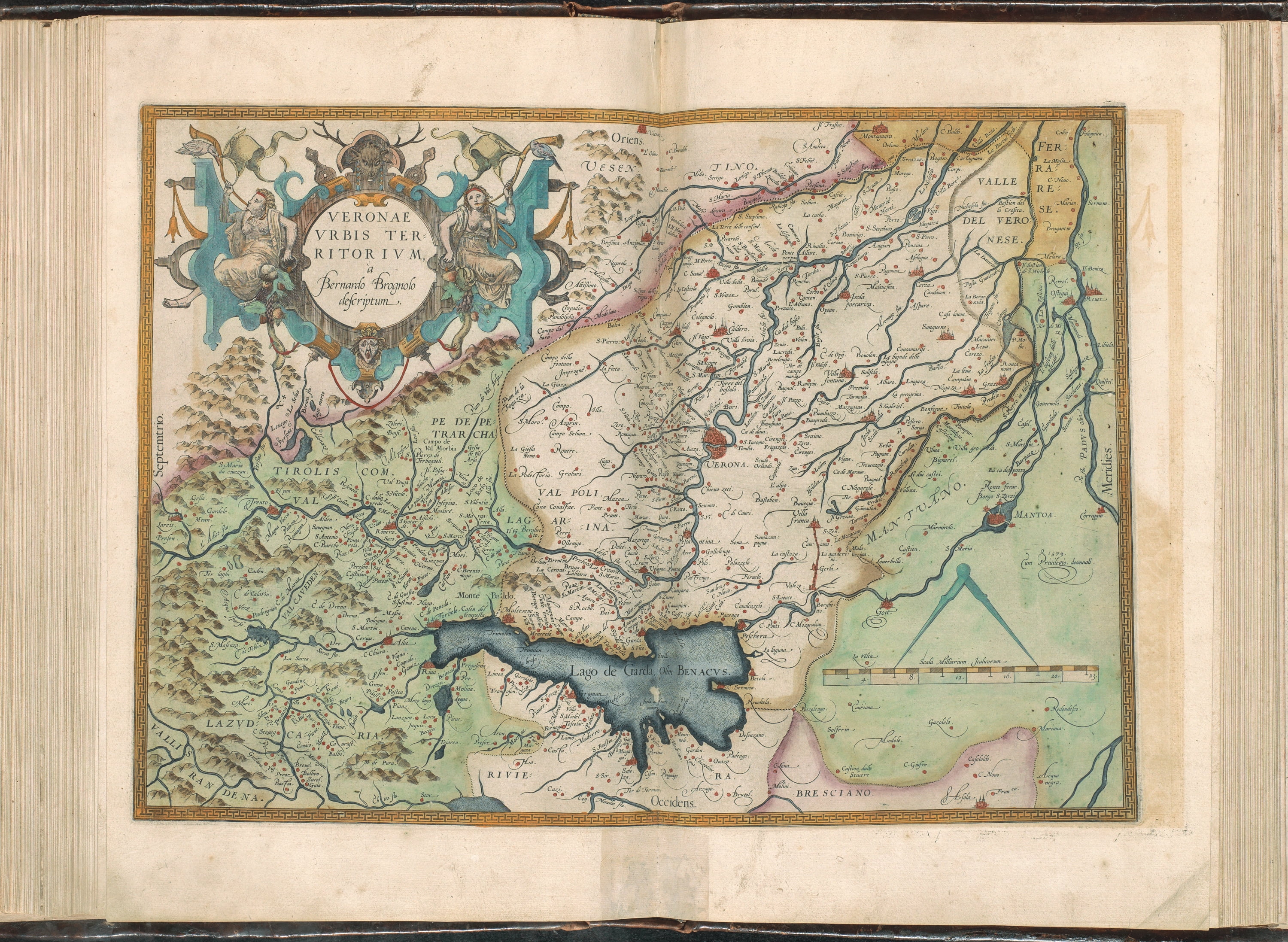

Sebastian Münster's maps of the country, printed first in 1538 and again in 1540 for his Geographia and Cosmographia, were both derived from Tschudi's manuscripts. Although Tschudi's history of the Swiss Confederation was not published until well into the eighteenth century, his influence on the mapping of Switzerland had already been well established. The SourceOrtelius credits this map to the Swiss statesman, historian, and forger Aegidius Tschudi. In the upper left, that is to say the southeastern extreme of the map, is the Lago di Garda: a brief Latin text explains ' It is said that this lake produces gold grains of sand, brought by the river Mincius'. The text of the shadowed right face, bafflingly, describes the chimney-sweep denizens of the Valley of Vegets in the Canton of Ticino, who plied their trade throughout Europe. The map's title cartouche is presented as a great block, or box, with writing on three sides: the top bearing the title and author, the facing side describing Switzerland's location and extent. Switzerland's rivers, mountains, and lakes are depicted in vigorous detail. A Closer LookCoverage extends from southern Germany and France, including the headwaters of the Danube River in Swabia and it reaches as far south as the Piedmont and Savoy. This richly detailed, southern-oriented map provided the best delineation of the Swiss Confederation of the sixteenth century. This is Abraham Ortelius' 1570 map of Switzerland, the first to appear in a modern atlas. Minnesota - North Dakota - South Dakota.Massachusetts - Connecticut - Rhode Island.


 0 kommentar(er)
0 kommentar(er)
